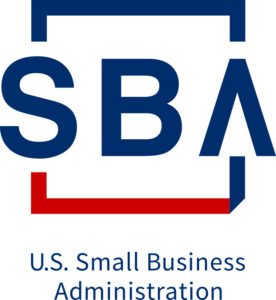Selling a Business When It’s Not For Sale:
The Financing
04 April 2022: Selling a Business When It’s Not For Sale: The Financing
Selling a business when it’s not for sale means you’ve got to figure out, among the other things we’ve been going on about for the last four weeks, the financing.
“What?!?”, I hear the crowd wail. “Doesn’t the BUYER have to figure our their own financing??” Well, yes and no but in either case, the business owner is very likely to be involved – and if you’re the business owner, you need to be prepared for how the financing is likely to be structured.
This is the fifth installment in our series on selling a business when it’s not for sale. In previous installments we discussed The Offer, The Value, The Negotiation and The Due Diligence. This installment is about the financing; how the transaction is likely to be financed.
The Players
 Here’s an important statistic to keep in mind: More than 80% of small business acquisitions involve some degree of seller financing. And by “small business” we mean most businesses worth anything south of US$10 mil.
Here’s an important statistic to keep in mind: More than 80% of small business acquisitions involve some degree of seller financing. And by “small business” we mean most businesses worth anything south of US$10 mil.
Financing the acquisition of a business generally involves several channels or sources of funding: the buyer’s down payment, funds burrowed by the buyer – usually from a conventional lender such as the buyer’s bank – and funding provided by the seller.
But there may also be another party involved; a government agency overseeing a guaranty program.
We offer a comprehensive coaching program tailored to Realtors, business owners and anyone interested in buying or selling a businesses.
If you’d like to learn more, email me at jo*@*******************og.com
Many countries – and many smaller jurisdictions such as counties, provinces and cities – offer financing assistance. In some instances, they do so via direct lending, grants or loan guarantees to assist business owners and buyers. For example, in the United States, the Small Business Administration (SBA) is a major player in the Main Street and Lower Middle markets of the M&A business.
The SBA is not a direct lender, however. It provides guarantees to conventional lenders that the monies lent to acquire a business will be paid back. Well, at least most of it. More on that in a moment.
But when a buyer starts looking for an acquisition loan, a couple of problematic issues must be acknowledged and overcome.
Issue 1: conventional lenders are FAR less keen to lend for the acquisition of a business than they are of a house. This is because should the buyer default and the lender end up with the asset, it’s far easier to sell a house than a business. Lenders HATE owning real estate. But they REALLY HATE owning businesses.
Issue 2: conventional lenders have no idea how to value a business, unlike a house for which home appraisers provide valuations that most lenders are comfortable with.
Typical Financing Structure
So, how would the financial structure of a theoretical deal look?
 Assuming a conventional lender is involved, a typical deal would require the buyer to have a minimum of 20%-30% cash invested, though in some cases, the buyer might be required to put up as much as 50%. The more that buyer invests, the more willing a lender will be to lend the balance thereby eliminating, in some cases, any need for the seller to contribute.
Assuming a conventional lender is involved, a typical deal would require the buyer to have a minimum of 20%-30% cash invested, though in some cases, the buyer might be required to put up as much as 50%. The more that buyer invests, the more willing a lender will be to lend the balance thereby eliminating, in some cases, any need for the seller to contribute.
But buyers want to preserve their capital. They know that their ramp-up period will require extra working capital and they also know that the best laid plans can go awry quickly and that having a war chest as a backstop will keep them out of serious trouble. Therefore, most buyers will want to put down the minimum – say 25% – as a rule. So, we have to find the other 75%.
Unless the buyer intends to pledge real assets such as real estate, precious jewelry or that black Lamborghini Veneno parked discreetly in the garage to collateralize the loan, in our experience, conventional lenders will rarely lend more than 50% of the purchase price – and then only if there is enough value in enough easily disposable assets to repay the loan if the buyer defaults. (I’m not sure how “easily disposable” the Lambo is…)
That still leaves us short 25% of the purchase price.
___________________________________________________________________________________________________
REALTORS! Our course, “Learn How to Value and SUCCESSFULLY Sell Businesses“, teaches you how to value and sell businesses.
Don’t Miss Out on the Coming “Silver Tsunami”!
The Defender
However, when a government agency steps in, the dynamics change considerably.
 Some government bodies will actually provide some funding – in some cases via grants, in other cases via direct loans. However, in the U.S., the federal government (by that I mean our tax-paying friends and neighbors) acts as a guarantor for the conventional lender via the Small Business Administration (SBA). That is, the government guarantees the lion’s share of the loan provided by the lender. (If you’ve been the recipient of one of these loans, don’t hesitate to thank the rest of us.)
Some government bodies will actually provide some funding – in some cases via grants, in other cases via direct loans. However, in the U.S., the federal government (by that I mean our tax-paying friends and neighbors) acts as a guarantor for the conventional lender via the Small Business Administration (SBA). That is, the government guarantees the lion’s share of the loan provided by the lender. (If you’ve been the recipient of one of these loans, don’t hesitate to thank the rest of us.)
Needless to say, this guaranty has conventional lenders falling all over themselves for a piece of the M&A action because it significantly reduces the lender’s risk. As a benefit to buyers, this allows the lender to offer acquisition loans at lower interest rates than they otherwise would.
And if that wasn’t enough to marvel at, a benefit to the seller is that a business that qualifies for a SBA guaranty will enjoy greater demand in the market place; and greater demand generally translates into higher value. (DUH!)
The Caveat
Having a business that qualifies for a government loan guaranty makes the business easier to sell and easier to finance. But you kn0w that there has to be some trade-off, right?
In the U.S., that trade-off is that the SBA almost always wants the seller to provide some of the financing. On the face of it, that doesn’t seem to be unreasonable.
But the SBA generally wants the seller to be in a so-called “stand by” position. What that means is that the lender’s loan – the one the SBA will guaranty – gets paid off, or nearly so, before any payments can be made against the seller’s note. So, if you’re selling a $2.5 million business and you take back a note for $500,000, no payments are allowed to be made on that note until the lender is paid; and that could be as long as 10 years.
An Example
Let’s use that hypothetical $2.5m business as an example and assume that the SBA will participate.
The buyer will have to put at least 25% – $625,000 – into the deal. A loan guaranteed by the SBA will likely be for no more than 60% of the purchase price – $1,500,000 (and the SBA will guaranty only about 80% of that; $1.2m. The lender should, after all, bear some risk!) This leaves a funding gap of $375,000. The only remaining pockets to pick are the seller’s.
In this case, the seller would walk away from closing with $2.125m in cash and a $375,000 receivable. But as long as the SBA is involved, the seller usually has to wait for the balance.
SBA-guaranteed loans can impact a businesses value. They do so in that most such loans are for 10 years.
This impacts value from the standpoint that the business’ cash flow has to be sufficient to cover that debt as well as provide the buyer with income sufficient to support his/her family. If the amount of revenue that can be directed to paying off that $1.5m debt is insufficient to service that debt, the acquisition price may have to be reduced to the point that a lower loan amount can be serviced from cash flow.
Why The Seller Stays
The SBA – and everybody else involved, frankly – views the seller as the real White Knight. As long as the seller is owed money, the  seller retains a vested interest in the well being of the business. Anybody with any skin in the game – the lender, the guarantor, etc. – want to know that, if the economy goes south, if a lawsuit is filed against the company, if the buyer isn’t up to the task of running the business or if the buyer falls in love with some cocktail waitress while at an industry convention in Las Vegas and runs off to Polynesia to work on his tan, the White Knight – the seller – will, in all likelihood, be willing to get back in uniform, climb back into the cockpit and save the day (to save nothing of the posteriors of lenders and tax payers).
seller retains a vested interest in the well being of the business. Anybody with any skin in the game – the lender, the guarantor, etc. – want to know that, if the economy goes south, if a lawsuit is filed against the company, if the buyer isn’t up to the task of running the business or if the buyer falls in love with some cocktail waitress while at an industry convention in Las Vegas and runs off to Polynesia to work on his tan, the White Knight – the seller – will, in all likelihood, be willing to get back in uniform, climb back into the cockpit and save the day (to save nothing of the posteriors of lenders and tax payers).
But the deal may require the seller to stay on for another reason, as well.
Similar to lenders, many buyers see the seller as essential to the business’ operations during an extended transition period. And, as long as the seller is owed money for the sale of the business, the buyer feels the seller will be available to help out if required.
Similar to a house that’s been lived in by one family for 15 years, there are always a few secrets in the operation of a business; secrets that only the business owner knows. My house is a perfect example.
A few years ago, I wanted to install some accent lighting at various points around our property. Being reasonably handy, I did the job myself – and liked the result so much that I expanded on my original plan. The result is that, if I don’t show the buyer of my home where all the wires, connections, transformers and other assorted dohickies are, if one of those lights goes out, no one will have the foggiest idea where to start to fix it.
(As an aside, I think it’s necessary at this juncture to point out that the lighting scheme at our house really is “accent” lighting. I assure you that it bears no resemblance whatsoever to this.)
The Bottom Line
Wherever you are, you would be wise to find out if your business qualifies for a government acquisition loan or loan guaranty. If it does, this is an important tool in marketing the business. We encourage all our selling clients to try to get qualified as it will likely produce a quicker sale at a higher price.
But whether you take this approach or not, be realistic about your financing expectations. If someone – maybe us! – shows up at your door and says “We’d like to buy your business”, understand that you will probably be providing some of the acquisition financing – especially of you want top dollar. (See this post on value.)
If you have any questions or comments on this topic – or any topic related to business – I’d like to hear from you. Put them in the comments box below. Start the conversation and I’ll get back to you with answers or my own comments. If I get enough on one topic, I’ll address them in a future post or podcast.
I’ll be back with you again next Monday. In the meantime, I hope you have a safe and profitable week.
Joe
Searching For…
This week we received an inquiry from an institutional buyer looking for businesses with between $1m and $5m in Discretionary Earnings in multiple industries including software monitoring, emergency waste cleanup and high end landscaping.
If any of you know of something that might fit, please let me know.

#business #businessacquisition #sellabusiness #becomeabusinessbroker #businessbrokering #businessvaluation #MergersandAcquisitions #buyabusiness #sellabusiness #realtor #realestateagents
The author is the founder of Worldwide Business Brokers and holds a certification from the International Business Brokers Association (IBBA) as a Certified Business Intermediary (CBI) of which there are fewer than 1,000 in the world. He can be reached at jo*@*******************og.com
